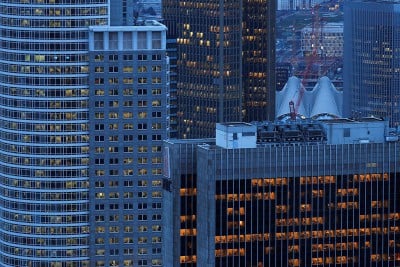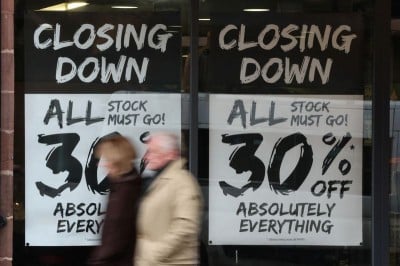
Comstock Images / Getty Images
Libor is the interest rate banks charge each other for short-term loans. Historically, the Libor rate is usually a few tenths of a point above the federal funds rate. When it diverged from the fed funds rate in September 2007, it was among the financial indicators foreshadowing the financial crisis of 2008.
Libor is short for the London Interbank Offered Rate. Originally, London banks in the British Banking Association (BBA) published it as a benchmark for global bank rates. In February 2014, after the BBA was found guilty of price-fixing, the Intercontinental Exchange (ICE) took over its administration. The rate-fixing inquiry revealed how banks manipulated interest rates for their own gain.
Historical Libor Interest Rates
The table and chart below show a snapshot of the historical Libor rates compared to the fed funds rate since 1986. Pay particular attention to the Libor rates from 2007–2009, when it diverged from the fed funds rate.
In April 2008, the three-month Libor rose to 2.9%, even as the Federal Reserve lowered the fed funds rate to 2%. That was after the Fed had aggressively dropped the rate six times in the previous seven months. After 2010, Libor steadily declined to be closer to the fed funds rate. From 2010 to 2014, the Fed used quantitative easing to keep rates low. It bought U.S. Treasury notes and mortgage-backed securities from its member banks.
Why did Libor suddenly diverge from the Fed's interest rate target? It's because banks started to panic when the Fed bailed out Bear Stearns, which was going bankrupt due to investments in subprime mortgages. Throughout the spring and summer, bankers became more hesitant to lend to each other. They were afraid of the collateral that included subprime mortgages. Libor rose steadily to indicate the higher cost of borrowing.
On October 8, 2008, the Fed dropped the fed funds rate to 1.5%. Libor rose to a high of 4.8% on October 10. By the end of the month, the Dow had fallen 16%.
By the end of 2009, Libor returned to more normal levels thanks to Federal Reserve measures to restore liquidity.
Since 2010, Libor has steadily declined to be closer to the fed funds rate. From 2010 to 2014, the Fed used quantitative easing to keep rates low. It bought U.S. Treasury notes and mortgage-backed securities from its member banks.
In the September of 2011, the Fed implemented Operation Twist, another form of quantitative easing. Despite this easing, the Libor rate rose in late 2011. Investors grew concerned about potential debt defaults from Greece and other contributors to the eurozone debt crisis.
In late 2015, Libor began rising again. Investors anticipated that the Federal Open Market Committee would increase the fed funds rate in December. The same thing happened in 2016.
| Date | Fed Funds Rate | 3-Month LIBOR Rate |
|---|---|---|
| Dec 31 1986 | 6.00 | 6.43750 |
| Dec 31 1987 | 6.88 | 7.43750 |
| Dec 30 1988 | 9.75 | 9.31250 |
| Dec 29 1989 | 8.25 | 8.37500 |
| Dec 31 1990 | 7.00 | 7.57813 |
| Dec 31 1991 | 4.00 | 4.25000 |
| Dec 31 1992 | 3.00 | 3.43750 |
| Dec 31 1993 | 3.00 | 3.37500 |
| Dec 30 1994 | 5.50 | 6.50000 |
| Dec 29 1995 | 5.50 | 5.62500 |
| Dec 31 1996 | 5.25 | 5.56250 |
| Dec 31 1997 | 5.50 | 5.81250 |
| Dec 31 1998 | 4.75 | 5.06563 |
| Dec 31 1999 | 5.50 | 6.00375 |
| Dec 29 2000 | 6.50 | 6.39875 |
| Dec 31 2001 | 1.75 | 1.88125 |
| Dec 31 2002 | 1.25 | 1.38000 |
| Dec 31 2003 | 1.00 | 1.15188 |
| Dec 31 2004 | 2.25 | 2.56438 |
| Dec 30 2005 | 4.25 | 4.53625 |
| Jan 31 2006 | 4.50 | 4.68000 |
| Mar 28 2006 | 4.75 | 4.96000 |
| May 10 2006 | 5.00 | 5.16438 |
| Jun 29 2006 | 5.25 | 5.50813 |
| Sep 18 2007 | 4.75 | 5.58750 |
| Oct 31 2007 | 4.50 | 4.89375 |
| Dec 11 2007 | 4.25 | 5.11125 |
| Jan 22 2008 | 3.50 | 3.71750 |
| Jan 30 2008 | 3.00 | 3.23938 |
| Mar 18 2008 | 2.25 | 2.54188 |
| Apr 30 2008 | 2.00 | 2.85000 |
| Oct 8 2008 | 1.50 | 4.52375 |
| Oct 29 2008 | 1.00 | 3.42000 |
| Dec 16 2008 | 0 | 2.18563 |
| Mar 31 2009 | 0 | 1.19188 |
| Jun 17 2009 | 0 | 0.61000 |
| Dec 18 2009 | 0 | 0.25125 |
| Dec 31 2010 | 0 | 0.30281 |
| Dec 31 2011 | 0 | 0.58100 |
| Dec 31 2012 | 0 | 0.30600 |
| Dec 31 2013 | 0 | 0.24420 |
| Dec 31 2014 | 0 | 0.25560 |
| Dec 31 2015 | 0.50 | 0.62000 |
| Dec 31 2016 | 0.75 | 0.99789 |
| Dec 29 2017 | 1.50 | 1.69248 |
Source: "Historical Fed Funds Rate," Federal Reserve. "Historical Libor Rate," Federal Reserve.
Early History
In the 1980s, banks and hedge funds began trading options based on loans. The derivative contracts promised high returns. There was just one hitch. Both parties had to agree on the interest rates of the underlying loans. They needed a standard method to determine what a bank would charge for a future loan.
That's when the British Banking Association stepped in. In 1984, it created a panel of banks. It asked them what interest rate they would charge for various loan lengths in different currencies. Banks could now use the results to price derivatives.
The actual survey question was, "At what rate do you think interbank term deposits will be offered by one prime bank to another prime bank for a reasonable market size today at 11 a.m.?"
The BBA responded to the 2008 financial crisis by modifying its survey question. It asked panel members: "At what rate could you borrow funds, were you to do so by asking for and then accepting inter-bank offers in a reasonable market size just prior to 11 a.m.?" The question was more realistic. It gave better results by asking the bank what it could actually do, rather than what it thought.






